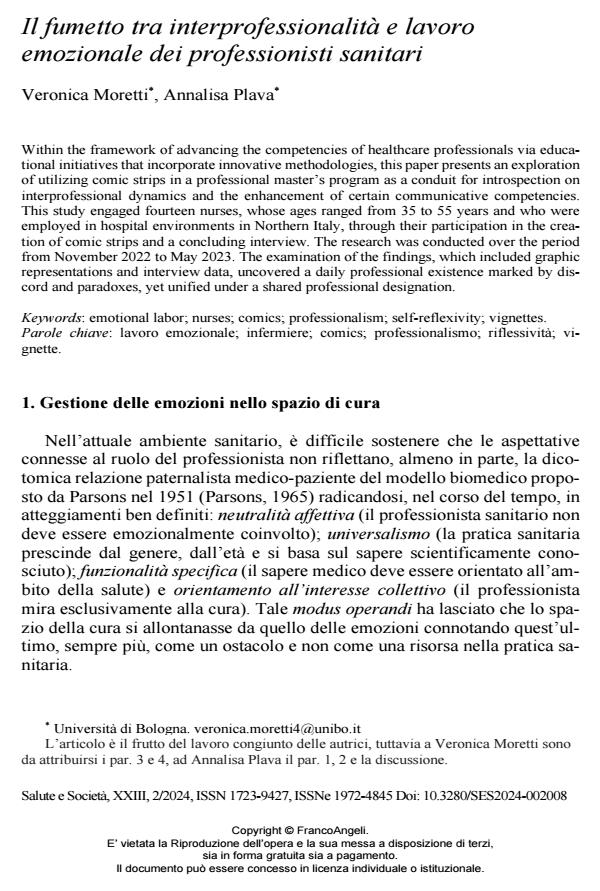Il fumetto tra interprofessionalità e lavoro emozionale dei professionisti sanitari
Journal title SALUTE E SOCIETÀ
Author/s Veronica Moretti, Annalisa Plava
Publishing Year 2024 Issue 2024/2
Language Italian Pages 15 P. 118-132 File size 326 KB
DOI 10.3280/SES2024-002008
DOI is like a bar code for intellectual property: to have more infomation
click here
Below, you can see the article first page
If you want to buy this article in PDF format, you can do it, following the instructions to buy download credits

FrancoAngeli is member of Publishers International Linking Association, Inc (PILA), a not-for-profit association which run the CrossRef service enabling links to and from online scholarly content.
Within the framework of advancing the competencies of healthcare professionals via educa-tional initiatives that incorporate innovative methodologies, this paper presents an exploration of utilizing comic strips in a professional master’s program as a conduit for introspection on interprofessional dynamics and the enhancement of certain communicative competencies. This study engaged fourteen nurses, whose ages ranged from 35 to 55 years and who were em-ployed in hospital environments in Northern Italy, through their participation in the creation of comic strips and a concluding interview. The research was conducted over the period from November 2022 to May 2023. The examination of the findings, which included graphic repre-sentations and interview data, uncovered a daily professional existence marked by discord and paradoxes, yet unified under a shared professional designation.
Keywords: emotional labor; nurses; comics; professionalism; self-reflexivity; vignettes.
Veronica Moretti, Annalisa Plava, Il fumetto tra interprofessionalità e lavoro emozionale dei professionisti sanitari in "SALUTE E SOCIETÀ" 2/2024, pp 118-132, DOI: 10.3280/SES2024-002008